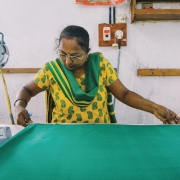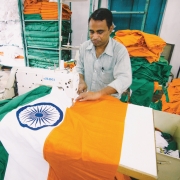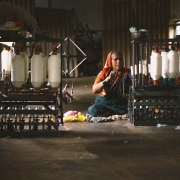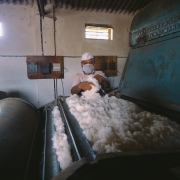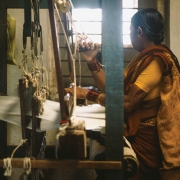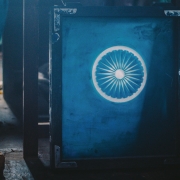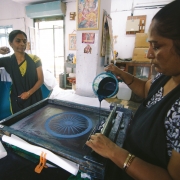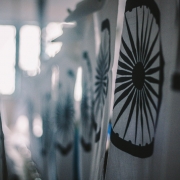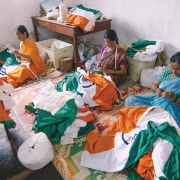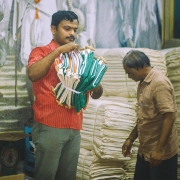
Etcetera
Travel; lifestyle; heritage and arts; books and miscellany

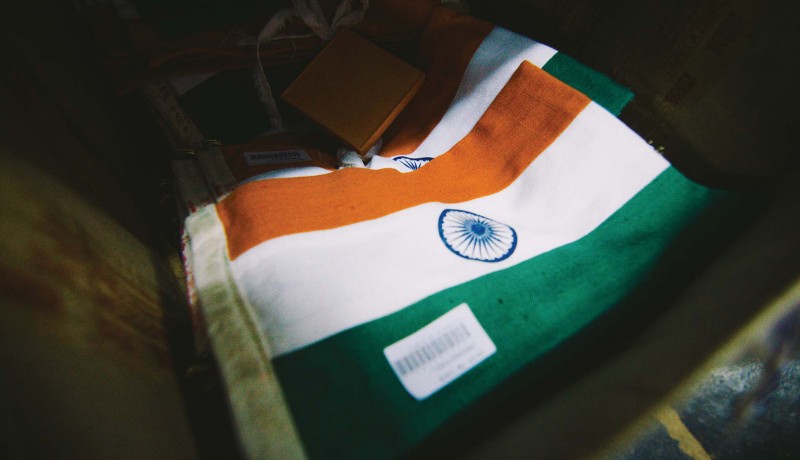
On 15 August, when the tricolour soars proudly over Red Fort in New Delhi and at flag-hoisting ceremonies across the country, we owe a salute to a simple but dedicated band of patriots in Karnataka’s Hubli district. These are men and women, around 90 of them, who make our national flag, at the Karnataka Khadi Gramodyog Samyukta Sangh (KKGSS), in Bengeri, a small town in Hubli.
The sole producer of the tricolour since 2006—before that, the flag was made at units scattered across India—KKGSS was initially set up to promote khadi. It was founded in 1957 by a group of passionate freedom fighters from Karnataka, and manufactured khadi clothes, carpets, bags, bed sheets, soaps, handmade paper and processed honey while providing employment to rural youth.
Now, KKGSS’s focus is on manufacturing the national flag, something it has been doing since it received certification by the Bureau of Indian Standards in 2006. “Sales peak around June, July, August and December-January, closer to Independence Day and Republic Day. In the last financial year, we had a turnover of ₹ 1.6 crore,” says KKGSS secretary Basavraj Hiremat.
The tricolour looks simple and elegant but the process that leads up to this final product is very exacting. Any defects in the flags thus produced, in colour, size and thread count, are considered an offence punishable with—hold your breath—a fine or even imprisonment under the Flag Code of India 2002.
At the Bengeri factory, a majority of the employees are women. Aparna Koti (in above pic), a supervisor who teaches new recruits to work with high-speed Japanese sewing machines, began working here as a daily-wage worker 13 years ago. “When this unit started 10 years ago, we had 30 tailors. Slowly, the number decreased. The workers found it hard to keep up with the stringent standards we maintain.”
Each flag that comes out of the Bengeri unit is checked 18 times during different steps in the process. The raw material is sourced from cotton farmers in North Karnataka and processed at a handful of units in Bagalkot district, 150 km from the Bengeri factory. At these units, the cotton is spun into two-ply and three-ply threads that are then handwoven into thick, strong sheets with a 33-thread count—stronger even than denim, they say.
This cloth is bundled off to Bengeri, where it is checked closely. A bundle can be rejected if a single thread is out of place, but not hastily so. “This is because one loose thread indicates that the strength of the cloth has been weakened during the weaving process,” explains Hiremat. “It is not a chance we liketo take.”
The cloth is then bleached, dyed, cut to specified dimensions and stitched together. But before that, the Ashoka Chakra is screenprinted onto both sides of the white strip in total synchronicity. It is cured at 1400 Celsius so the colour stays strong and bright, even in changing weather conditions. “From cotton to carton, it takes three months,” he says.
Hiremat says the number of flags produced annually varies. “There are nine different sizes of flags and we receive orders from various sources such as the government, retail outlets, online and organisations. The smaller sizes are more popular. We sometimes make over 100 of the small flags a day.”
Thus, in the nondescript town of Bengeri, hidden in the vast plains of northern Karnataka, is a group of people who form an integral part of our national fibre. Ironically, they will probably never experience the heights at which their flags will one day fly. “When we celebrate good things for our country and when we participate at international sporting meets, there is one element that binds these events together—the tricolour,” says Aparna Koti. “It feels great to know that that flag was made here, by our hands.”
Text & Photo: Sumukh Bharadwaj Featured in Harmony — Celebrate Age Magazine August 2016
Small yet impactful choices can be game-changers, writes Srirekha Pillai At 102, there’s no stopping Chandigarh-based Man Kaur, the world’s….
While a regulatory framework is vital for senior-care facilities, the need of the hour is to develop an ecosystem to….
Published in a special edition to honour Japanese master storyteller Haruki Murakami’s 70th birthday, Birthday Girl (Penguin; Rs 100; 42….
Published as the revised and updated second edition, Incomparable Sachin Dev Burman (Blue Pencil; Rs. 599; 470 pages) the authoritative….

Harmony Celebrate Age
502 Plot No. 91/94
Prabhat Colony
Santacruz (East)
Mumbai – 400055

